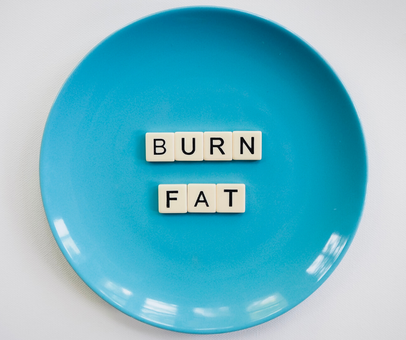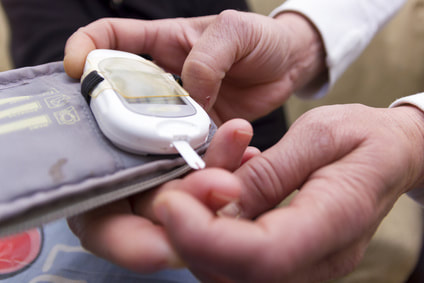|
Dear Endurance Athletes, Please stop assuming that you can train for an event without appropriately setting your nutrition plan up. That’s an assumption that will lead to lack of progress and sub-par performance! Love, Tiana Okay, maybe that’s a little harsh but sometimes the truth can be! For example, let’s say your goal this year is to PR your Half Marathon time! Would your approach be to just run 13.1 miles at your goal pace every single day of training? (I’m praying you’re screaming NOOOOO on the other side of the screen right now!) That sounds hard (physically AND mentally), destructive on the body (talk about a recipe for holding on to fat tissue!) and down right boring! Instead, if you have a great plan, you are going to periodize your training so that you have phases where you build a base of endurance, then you build some speed, then you practice some race simulations (test nutrition, gear, etc), then you test (RACE DAY!), then you recover. If we take it even deeper, each week of training will call for different types of training too. Some weeks will have more volume than others. Some weeks will call for more speed work and maybe even some overreaching workouts. Some weeks will be recovery weeks so you can soak up all your training! Even your individual workouts are broken down: you start with a warm-up that is slow and easy, then maybe you do some skill work, then some speed work, then you cool down. This, my friends, is periodization. Periodization is the concept of breaking something up into defined blocks or periods. If you have been an athlete for awhile, especially one who has a “season,” you should be familiar with this concept. So if you understand the value and necessity of varying your endurance, intensity, frequency and recovery to get the best out of your body for your sport, why wouldn’t you do the same thing with your nutrition? Guess what? YOU SHOULD. This article is going to be a 10,000 foot view of nutrition periodization and how to apply it to your training and performance goals so you can start seeing better results! TRAINING CYCLES Let’s start with the training cycles. Any athlete who wants to achieve some type of performance goal should have in place an Annual Training Plan (ATP). Many athletes who work with coaches have this plan put together for them by their coaches. If you don’t have a coach, you can purchase a stock plan to follow online. There are plenty of great stock plans available for purchase from coaches through Training Peaks, or you can reach out to me at Fifth Element to put the right plan together for you and your goals. Whether you are building your own annual training plan or purchasing one, there are a few components that must be included:
CREATING YOUR OWN ATP To create your own ATP, start by plugging your races onto your calendar. Then, using whatever training plan you obtained, work backwards from your race date to plug in your specific training blocks. For example, if you plan to follow a 12 week training program into your first half marathon of the year, which is on May 31, then your first training block will start on March 9th (12 weeks before May 31). Everything between your last event last year and March 9th of this year is considered by most as your “off-season” and/or “pre-season.” This annual training plan is what we call a macrocycle, which makes up your entire season. For most ameteur athletes, this is usually one year in length. For an athlete training for something like the Olympic Games, this cycle might be 4 years. Within the macrocycle, we have multiple mesocycles. These mesocycles usually refer to a single block of training which usually lasts for several weeks. For example, a 4 week build block would be a mesocycle. Within each mesocycle, we have microcycles. A microcycle is a very small block of training which usually lasts about 1 week in length. For example, within the 4 week build block (mesocycle), you will likely have 3 gradually increasing weeks of endurance and a 1 week recovery. Each of those weeks would be an individual microcycle within your mesocycle. Make sense? Photo Credit: Sportlyzer Academy A TIP FOR YOUR ATP When you are building out your own annual training plan, it is a great idea to get down on paper your macrocycle (your entire season), and the mesocycles (the individual blocks that will make up your training into each event). It is not necessary at the beginning of the year to build out the fine details of each microcycle as these can and will likely change as the season progresses. If this is not something that comes naturally to you, consider hiring a coach to do it for you. I know you’re likely thinking “I thought we were going to be talking about diet cycles, not training cycles!”. And you’re right. But explaining the breakdown of the training plan itself will help you understand how to approach your nutrition plan! This is because once you know your macro and meso cycles, now we can apply the same concepts to create your annual nutrition plan. NUTRITION CYCLES It is not uncommon for athletes to come to me and say “I want to lose body fat and gain lean muscle.” If you don’t understand how challenging this is to do at the same time, refer back to my last blog that addresses this topic HERE. To put it simply, attacking both goals at once can lead to overwhelm and failure. Instead, focusing on one goal (i.e., lose body fat), then focusing on the other (i.e., gain lean tissue) can be incredibly effective. The demands on your body for each of these goals is different and in order to achieve them, you would need to eat differently. Think about it. An overweight athlete trying to lose excess body fat does NOT eat the same diet as an Olympic weightlifter trying to gain more muscle and strength. I bring this idea up with you because it is a concept that can be applied to endurance athletes interested in getting faster for a future event. As you cycle through the various training blocks in your ATP, your body will have different energy requirements that will need to be met (just as your body requires different things when you have different goals!). This is when having a great Annual Nutrition Plan (ANP) can be helpful! The goal of any great ANP is to strategically combine your exercise with your nutrition to obtain positive adaptations that support your performance. For instance, did you know that eating an increased amount of carbohydrates for a few weeks leading into an event can increase the absorptive capacity of your intestines which in turn reduces your risk of GI upset? I don’t know about you, but I don’t want to waste anytime in a port-a-potty at a race, especially when this is something that can be avoided with proper nutrition! WHY NUTRITION PERIODIZATION IS KEY Periodizing your nutrition can have a direct effect on:
NUTRITION STRATEGIES FOR YOUR PRE-SEASON Pre-season is the best time for you to prioritize body composition changes. For most athletes, this usually means losing body fat or gaining lean tissue. This is also the time of year that GOOD HABITS around your diet and lifestyle need to be established. Spending time learning how to plan weekly menus and meals, cooking and bulk prepping food can all be very helpful. Once you officially start training, you won’t have nearly as much time or energy to devote to this. If you already do those things, pre-season is a great time to break up the monotony of your regular meals and experiment with new recipes. Other habits like proper hydration should also be established. NUTRITION STRATEGIES FOR YOUR BASE PHASE Base Phase of training is when most athletes transition away from whatever fun sport they have been doing in their off season, and start to build back an endurance base in their specific sport. Nutritionally, this is a great time to focus on fat adaptation (i.e., transitioning your body to burn fat over carbohydrates). The body can be taught to oxidize (burn) more carbohydrate or fat, depending on training and diet. The average person has approximately 1,400 - 2,000 calories worth of carbohydrate stored in their body and 50,000 - 80,000 calories stored as fat. Clearly the body has plenty of resources in the form of fat that it can utilize for energy purposes. When the body burns more carbohydrates, it will naturally store more fat (something most people, especially endurance athletes, don’t want). Whereas burning more fat will allow the body to preserve the small amount of carbohydrates it has. Every endurance athlete will benefit from training their body to burn more of their stored body fat instead of relying on exogenous glucose from external sources like gels and goos! The more energy we can obtain from our own body without having to eat it, the better off we will be in training or in a race. Think about it this way: every single time we put calories in our body, we shunt blood away from our working muscles to help digest that food we just put in our system. So if you want to keep your blood in your muscles, it’s always a good idea to train your body to need less exogenous calories from food for training/racing. FROM BURNING CARBS TO BURNING FAT For athletes who have fat adapted in the past, doing a “reset” during your base can get your body burning more fat again in as little at 5 days! For athletes who have never gone through the process of fat adapting, it may take a little longer to effectively burn body fat and this process can and should be started much earlier in the year. If you need tips on how to get this process started, I have a free guide (including a meal plan!) to help you jump start the process! STRATEGIES TO SUPPORT YOUR BUILD PHASE In the build phase of training, we start focusing more on endurance, speed and intensities. This also means that our energy demands typically go up! Nutritionally, these energy demands need to be met in order to obtain the desired training adaptations. In other words, you have to make sure you are eating enough! If you don’t meet the energy demands of your body, your training will suffer. Who wants that?!? Most of the time, this increased energy demand is met with an increase of carbohydrates to support your harder and longer sessions. But “carb loading”, as it’s so well known, doesn’t mean eating pasta on Friday night before your weekend training! Instead, it might mean eating more root vegetables with meals and occasionally throwing in some non-glutinous grains if your body tolerates them well. CARBOHYDRATE TOLERANCE How well our body tolerates carbohydrates is known as our “carbohydrate tolerance” and is determined based on our genetics as well as whether or not your body is responding well to insulin. How do you know if your body tolerates different types of carbohydrates well? You test! Carb testing is a really important piece to discovering if your body likes specific carbohydrates. For example, I learned through testing that my body does fine with non-glutinous grains, like rice, but not well AT ALL with fructose, like bananas. We don’t always FEEL our blood sugar fluctuations so testing is definitely the most accurate way to figure this out. Considering how broad this topic is, I am definitely going to be devoting a whole blog to it so stay tuned! And if you’re not on my email list, sign up here so you don’t miss it! EATING TO TRAIN I highly encourage athletes to use this training block to start ‘eating to train’ (rather than ‘training to eat’). This can be a mind shift for some athletes, but it’s an important one. It is important to start planning out your meals around your training. For example, in this phase, if hard workouts are being completed in the morning hours, intermittent fasting might have to cease in order to recover from workouts, especially if there is another workout in the afternoon. Lastly, this phase is our last chance for testing different foods.
Use this phase to TEST TEST TEST. Once you move into your race specific phase, it’s time to PRACTICE PRACTICE PRACTICE! STRATEGIES TO SUPPORT YOUR RACE SPECIFIC PHASE If you did your homework in your build phase and tested different meals and race specific foods you should now know what you like, and more importantly, what your body likes. Now it’s time to put it all to the test. Typically, in a race specific phase of training, you are adding in race simulation workouts as well as running through a dress rehearsal for race day nutrition (including what you eat the night before!). If you can, it’s ideal to dial in your race day nutrition plan so it goes into autopilot on race day. There will be plenty of decisions to make on race day with regard to performance, so give yourself a break by making nutrition a no brainer! If you need to, set up alerts on your watch to remind you to eat and drink at specific intervals so you don’t miss your nutrition timing. Once you start your taper into your specific event, then your calories can slightly go down as your training load also decreases. At that point, the focus should shift to clean eating, proper hydration and lots and lots of quality sleep! NUTRITION STRATEGIES FOR YOUR OFF SEASON This is the time of year that you should consider taking a break from all the structure, both physically with your training, but also with your diet. I highly encourage athletes to follow an unstructured, high quality diet during the off season. This means you’re still prioritizing a mostly plant based diet with high quality fats and proteins but you loosen the reigns a bit on counting, tracking, and dieting! Yes, this is me giving you permission to indulge a bit more! Ideally, aim for an 80/20 approach where 80% of your meals are clean and nutrient dense whereas the remaining 20% is more relaxed! For most athletes, this phase of training doesn’t last very long, so the amount of damage that can be done with enjoying yourself 20% of the time is negligible. And for most athletes, it certainly helps create motivation to get “back on the wagon” when preseason starts and a more regimented diet is being followed. WRAPPING IT UP So there you have it, my high level overview of a basic nutrition plan for your training and race season. Interested in getting more details about the nutrition recommendations during each phase? You’re in luck. I’m dedicating the next few articles to exactly that, so stay tuned! And make sure you’re subscribed to my email list so you don’t miss anything! Do you have a family member or friend who could benefit from learning more about creating an annual nutrition plan to shadow their training plan? Share this article with them and make sure they’re also signed up to get all the latest email updates from me! REFERENCES:
1 Comment
|
AuthorTiana Rockwell is a certified nutritional therapist, avid endurance athlete and dark chocolate lover. She believes that by eating REAL food, we can balance our body and reach optimal health and wellness! Archives
May 2022
Categories
All
|









 RSS Feed
RSS Feed